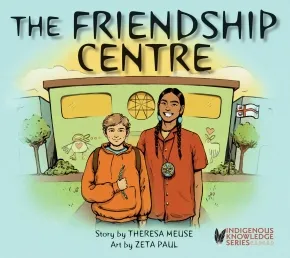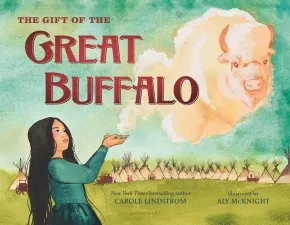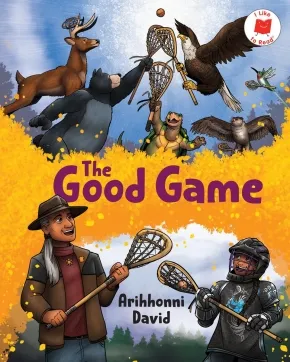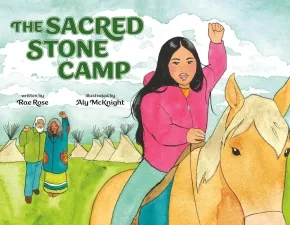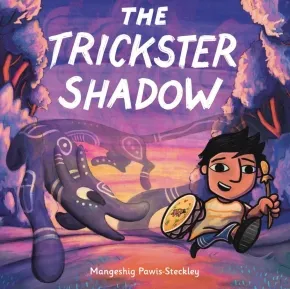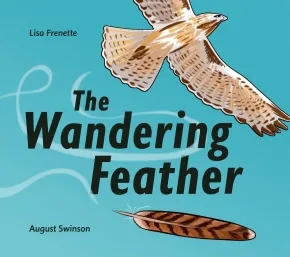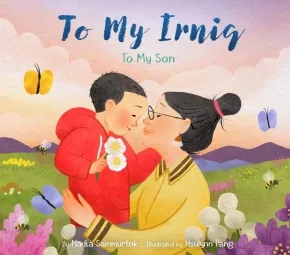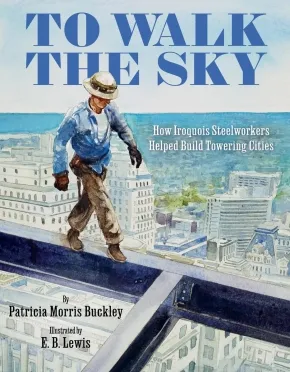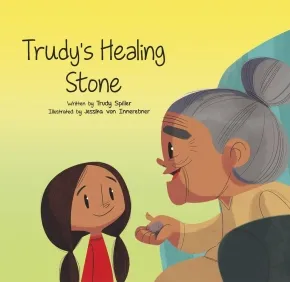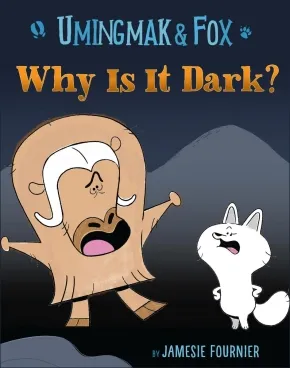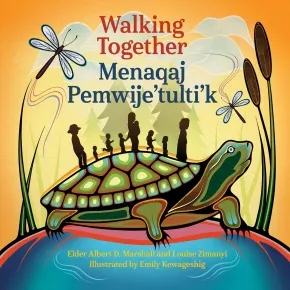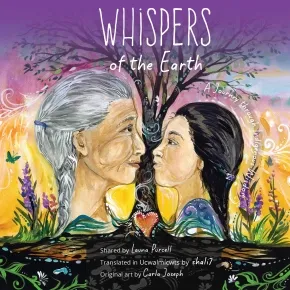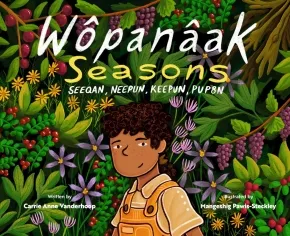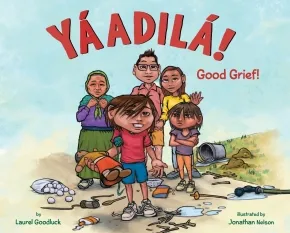
Indigenous Peoples
76
-
90
of
529 Results;
Sort By
Go To
of 36
The Friendship Centre
$13.95
Artists:
Format:
Paperback
Text Content Territories:
Indigenous Canadian; First Nations; Mi'kmaq (Mi'gmaq);
ISBN / Barcode: 9781774714416
Synopsis:
Synopsis:
A modern story of traditional Indigenous knowledge from the author of The Sharing Circle that teaches young readers about the importance of the Friendship Centre for urban Indigenous peoples.
Matthew is visiting his uncle in the big city! He can't wait to tour the Friendship Centre, where Uncle Hunter works, and enjoy all the food, activities, and resources it has to offer.
With language classes, drumming circles, feasts, and more, Matthew learns that the Friendship Centre provides a home away from home for urban Indigenous people. It's a space created for Indigenous people by Indigenous people, and Matthew feels welcomed right away. Matthew drums, smudges, and tastes freshly baked bannock, but his favourite parts of his visit are the people he meets.
From the author of Sweetgrass, The Gathering, and The Sharing Circle, and the illustrator of Muinji'j Asks Why, this story welcomes all into a safe and inviting community space.
Educator & Series Information
Recommended for ages 3 to 7.
This book is part of the Indigenous Knowledge Series.
Additional Information
32 pages | Paperback
The Game
$23.95
Artists:
Format:
Hardcover
Text Content Territories:
Indigenous Canadian; First Nations; Salish; Coast Salish; Musqueam;
ISBN / Barcode: 9781778401756
Synopsis:
Synopsis:
A beautifully illustrated reimagining of the origins of hockey from an Indigenous lens.
Killer Whale and Brown Bear are arguing: Brown Bear says he can beat Killer Whale at any challenge, yet Killer Whale disagrees. When Powerful Mena overhears their bickering, he comes up with a solution: a game on the ice, played with sticks, nets, and a star for a puck. But who will win and earn the trophy?
For kids aged 4-8, The Game features:
- An introduction to Musqueam language and culture
- Beautiful watercolor artwork from a celebrated Haida artist
- Detailed backmatter and a pronunciation guide
With poetic text by gifted Indigenous storyteller Henry Charles (Ten Bears), an elder of the Musqueam First Nation, and breathtaking illustrations by Haida artist, Shoshannah Greene, The Game offers a vibrant introduction to Musqueam language and culture and inspires readers to rediscover a sport we know and love.
Reviews
"This book is written in English with some words in hən̓q̓əmin̓əm̓. It begins with an introduction of the author, Henry Charles (Ten Bears), as the book was published posthumously. The story imagines hockey in the long ago; Mən’ə decided that a game played on ice was the only way for Killer Whale and Brown Bear to settle their dispute. Mən’ə made a trophy for the winner, but when Killer Whale wins, he declines the trophy as he is heading back to the ocean. The reward is then shared with a boy who invited others to witness the game, and he shares it with his people. Students can learn about important traditional practices (witnessing, inviting others to witness, and the use of a game to settle a dispute) through the story. Older students could use the story to learn about sportsmanship and review the characteristics of fair play." - Alethea S., Elementary School Teacher, Indigenous Books for Schools
Educator Information
Recommended for ages 4 to 8.
This title is included in the Indigenous Books for Schools database from the Association of Book Publishers of BC. It's recommended for K to 4 classrooms for English Language Arts and Physical and Health Education.
Additional Information
48 pages | 10.00" x 8.00" | Hardcover
The Gift of the Great Buffalo
$24.99
Artists:
Format:
Hardcover
Text Content Territories:
Indigenous American; Native American; Anishinaabeg; Ojibwe (Chippewa); Métis;
ISBN / Barcode: 9781547606887
Synopsis:
Synopsis:
In this beautiful and dramatic story, bestselling author Carole Lindstrom and illustrator Aly McKnight show readers how life was lived by Indigenous communities, offering the true history of life on the prairie.
Before there was a little house on the prairie, there was a tipi on the prairie.
Rose is a young Métis-Ojibwe girl who has traveled far with her family for the biannual buffalo hunt made up of hundreds of other Métis families. The ritual of the hunt has been practiced for generations, and each hunt must see the community through the next six months. But in recent years, the buffalo population has dwindled, and after days on the hunt, there are no buffalo to be found. Can Rose help her family find the herd that will enable them to survive the long winter?
Reviews
“This vital and authentic picture book offers an exciting adventure on the prairies not often heard.” —Booklist, starred review
“[Sparks] discussion about environmental conservation and the role that Indigenous people have played (historically and currently) in the care and regrowth of natural lands . . . Skillfully captures the wild beauty of the plains.” —BCCB
Educator Information
Recommended for ages 4 to 8.
Additional Information
40 pages | 8.46" x 11.02" | Hardcover
The Good Game (PB)
$12.49
Format:
Paperback
Text Content Territories:
Indigenous;
ISBN / Barcode: 9780823460809
Synopsis:
Synopsis:
How can the small mouse and squirrel play lacrosse with the big animals? A fun Native American tale that first graders can read on their own.
A game of lacrosse is about to begin—with the four-legged animals facing off against the winged animals. Mouse and Squirrel want to join!
But Bear and Deer won’t let animals so small on their team. The birds would welcome the small animals, but Mouse and Squirrel can't fly. The winged team has a clever plan.
This Native American tale about the origin of the bat and flying squirrel is framed by a grandfather sharing a story with his grandson.
Educator & Series Information
Phonics features are noted on the copyright page.
This book has been officially leveled by using the F & P Text Level Gradient(TM) Leveling System. It is a Level I for Grade 1.
The award-winning I Like to Read® series focuses on books for kindergarteners and first graders. Acclaimed author-illustrators create original, high-quality illustrations that support comprehension of simple text and are fun for kids to read again and again with their parents, teachers or on their own!
A Junior Library Guild Gold Standard Selection!
Educator Information
Recommended for ages 4 to 8.
Additional Information
32 pages | 7.77" x 9.99" | Paperback
The Sacred Stone Camp
$24.99
Artists:
Format:
Hardcover
Text Content Territories:
Indigenous American; Native American; Sioux; Dakota; Lakota;
ISBN / Barcode: 9780593696637
Synopsis:
Synopsis:
A stunning account of the Sacred Stone Camp's first day, where Indigenous activist LaDonna BraveBull Allard gathered water protectors to protest the Dakota Access Pipeline
The land is sacred to the people. The people are sacred to the land.
As Water Protectors gather to defend the water and protect the land against a black snake that threatens the rivers that millions of people depend on, a young girl looks to her Unci LaDonna and Lala Miles who are leading the way to the camp.
Although she’s nervous about what might happen next, she finds strength from her family and the strangers all coming together to stand up for what’s right.
Written with love by Rae Rose, who shares many memories with LaDonna, this is a deeply moving tribute to LaDonna’s work and impact with stunning watercolor illustrations by Aly McKnight.
Educator Information
Recommended for ages 5 to 9.
Additional Information
40 pages | 11.00" x 8.50" | Hardcover
The Trickster Shadow
$24.99
Format:
Hardcover
Text Content Territories:
Indigenous Canadian; First Nations; Anishinaabeg;
ISBN / Barcode: 9780316574518
Synopsis:
Synopsis:
From an acclaimed Ojibwe artist comes a story that offers an empowering universal message about finding inner strength.
Zoon’s shadow is always in his way. It makes a mess of his room, disrupts his class at school, and trips him on the soccer field. Zoon doesn’t know what to do! Until he tells his grandmother about it, and she gives him his grandfather’s drum. Its rhythm is like a heartbeat. If only Zoon can listen to the drum’s song, and ultimately to his own heart, he may yet find a way to thrive alongside his shadow.
Pawis‑Steckley's striking, graphic art brings to vibrant life both the challenges of controlling our trickster impulses and the luminosity of ancestral and inner wisdom, paving the way for us all to listen to our hearts.
Educator Information
Recommended for ages 4 to 8.
Additional Information
40 pages | 10.00" x 10.00" | Hardcover
The Wandering Feather
$22.95
Format:
Hardcover
Text Content Territories:
Indigenous Canadian;
ISBN / Barcode: 9781771476287
Synopsis:
Synopsis:
In this charming debut, a feather from a red-tailed hawk finds its home in a little girl's dreamcatcher
When a gust of wind blows a feather off a flying red-tailed hawk, it marks the beginning of that feather's quest to find a new home. The feather ends up in a squirrel's nest, a woman's hat, and atop a sandcastle-but none of these spots feel right.
Soon, the feather is picked up by a little girl who lovingly takes it home to join two other feathers as part of a special craft project. When the project is complete, the reader discovers that the feather has found its home in a dreamcatcher.
Bright illustrations bring young readers along on this lost feather's search for purpose, and the heartwarming conclusion weaves in a tribute to an Indigenous cultural object.
Educator Information
Recommended for ages 4 to 7.
Fountas & Pinnell Text Level Gradient: M
Lexile measure: AD630L
Additional Information
32 pages | 8.75" x 7.75" | Hardcover
To My Irniq: To My Son
$22.95
Artists:
Format:
Hardcover
Text Content Territories:
Indigenous Canadian; Inuit;
Grade Levels: Preschool; Kindergarten;
ISBN / Barcode: 9781772275599
Synopsis:
Synopsis:
This tenderly told follow-up to the acclaimed To My Panik: To My Daughter highlights the unique beauty of a mother-son bond. In this lovingly told book, a mother recounts for her son all the things she loves about him, connecting each attribute to an element of the Arctic landscape or Inuit traditional life. Her son is strong, like a polar bear carrying its cubs across the frozen sea. He is gentle, like a delicate blade of cottongrass. He’s as steadfast as the spark that lights the campfire, and as invigorating as a sip of icy river water. This beautiful narrative of connection and love will warm the hearts of all readers.
Reviews
"This tender story, told in a poetic question-and-response structure, celebrates the bond between a mother and child and between an Inuit family and the Arctic landscape. Ideal for shared reading in K–1 classrooms, the story invites connections to seasonal cycles while encouraging personal reflections on strength, gentleness, integrity, compassion, and humour. The illustrator’s use of soft textures and muted tones contributes to the emotional tone of the story. In English Language Arts, it supports vocabulary development and oral language comprehension. In Science, it can prompt comparisons between Arctic and British Columbian flora and fauna. In Arts Education, Pang’s use of space and perspective to express scale can be explored through watercolour or pastel art techniques." - Bonny-Lynn D., Elementary School Teacher, Indigenous Books for Schools
Educator Information
Recommended for ages 3 to 5.
This title is included in the Indigenous Books for Schools database from the Association of Book Publishers of BC as a recommended resource for kindergarten and Grade 1 for the following subjects: English Language Arts, Art, Science, and Social Studies.
Additional Information
28 pages | 9.50" x 8.50" | Hardcover
To Walk the Sky: How Iroquois Steelworkers Helped Build Towering Cities
$24.99
Artists:
Format:
Hardcover
ISBN / Barcode: 9780063046979
Synopsis:
Synopsis:
Look to the sky!
High above the ground, generation after generation, Native workers called skywalkers have sculpted city skylines, balancing on narrow beams, facing down terrifying heights and heartbreaking loss. These skywalkers who dared to touch the heavens have built a legacy of landmarks all over the North American continent—and even today, there are Native Americans still climbing up among the clouds, brave enough to walk the sky.
With impactful and illuminating prose, Patricia Morris Buckley (Mohawk) tells the soaring story of the remarkable skywalkers, whose bravery and tragedies are warmly captured in moving watercolors by award-winning artist E. B. Lewis (Lenni-Lenape).
Reviews
"By turns solemnly reverent and enthusiastic, Buckley’s elegant text will leave young people keenly aware of the historical and present-day significance of these groundbreaking workers, as well as their strength and resilience. Awe-inspiring." — Kirkus Reviews (starred review)
"Graceful language honors skywalkers throughout this stirring telling, while fluidly rendered watercolor illustrations in a desaturated color palette employ sweeping perspective and scale." — Publishers Weekly (starred review)
"This fascinating narrative provides an in-depth history of skywalkers, the Caughnawaga, and their contributions to our cities and infrastructure." — School Library Journal (starred review)
"The text, even with all its facts and figures, is deeply emotional, capturing the giddy danger of skywalking, the relentless need to better one’s life, and the sorrow in a preventable tragedy...blurring faces and bodies in a way that emphasizes the comradery and connection between the workers." — Bulletin of the Center for Children’s Books
"Here, a descendant of one of the 75 workers who died in the 1907 collapse of the Quebec Bridge pays eloquent tribute to the first generation of Mohawk “skywalkers” who came out of the Caughnawaga (later Kahnawà:ke) reserve in Canada." — Booklist
Educator Information
Recommended for ages 4 to 8.
Additional Information
40 pages | 8.50" x 11.00" | Hardcover
Trudy's Healing Stone (PB)
$10.95
Artists:
Format:
Paperback
Text Content Territories:
Indigenous Canadian; First Nations; Gitxsan (Gitksan);
ISBN / Barcode: 9781778540691
Synopsis:
Synopsis:
Everyone gets sad, angry, frustrated and disappointed. Difficult emotions are a natural part of life. In this book, Trudy's Healing Stone, Trudy Spiller shares a special teaching about a practice that anyone can use to help them process their feelings with the help of Mother Earth.
Educator Information
Recommended for ages 4-6
This rhyming book is an adaptation of Trudy’s Rock Story for a younger audience (ages 4-6).
A few Gitxsan words and how to say them are included at the end of the book.
This book is also available in French: Le caillou de guérison de Trudy.
Recommended in the Canadian Indigenous Books for Schools 2020/2021 resource list for Grades Pre-K to 1 for English Language Arts.
Additional Information
28 pages | 7.87" x 7.09" | Paperback
Umingmak and Fox: Why Is It Dark?
$22.95
Artists:
● Tim Mack
Format:
Hardcover
ISBN / Barcode: 9781774508725
Synopsis:
Synopsis:
A pair of friends, Umingmak and Fox, haven't seen the sun for a long time.
Umingmak the muskox watches the sky growing darker in the winter months. Umingmak is surprised and a little scared! He asks his friend Fox: Why is it dark? Fox explains why it is so dark during the winter and brighter in the summer. Will talking to Fox help Umingmak feel better about his fear of the dark?
Educator & Series Information
Recommended for ages 5 to 8.
This book is part of the Umingmak and Fox series. Umingmak and Fox: Why Is It Dark? takes a playful look at seasons in the North, where winter can be long and dark.
Additional Information
40 pages | 9.00" x 7.50" | Hardcover
Walking Together / Menaqaj Pemwije’tulti’k
$24.99
Format:
Hardcover
Text Content Territories:
Indigenous Canadian; First Nations; Mi'kmaq (Mi'gmaq);
ISBN / Barcode: 9781834020174
Synopsis:
Synopsis:
This bestselling and award-winning introduction to Etuaptmumk—the gift of multiple perspectives also known as Two-Eyed Seeing—is now available in a bilingual edition that celebrates the Mi’kmaw language and our connections to nature.
Elder Albert D. Marshall is a leading environmental voice who has brought forward the concept of Etuaptmumk, honoring and braiding both Indigenous and non-Indigenous knowledges and ways of knowing for the benefit of all. Walking Together is grounded in this, as well as in the concept of Netukulimk, meaning to protect Mother Earth for the ancestors and for present and future generations. The journey in Walking Together nurtures respectful, reciprocal, responsible relationships with the Land and Water, with plant life and animals, and with other-than-human beings.
Translated by Barbara Sylliboy and Arlene Stevens, Eskasoni First Nation, Unama’ki (Cape Breton), Nova Scotia, the dual-language text in Mi’kmaw and English furthers Elder Marshall’s lifelong work preserving cultural beliefs and creating a strong vision for his people and for the future. Elder Marshall and Louise Zimanyi are working together to promote Land-based learning through storytelling, an approach that has global relevance for protecting biodiversity, climate action, and resilience. Emily Kewageshig’s evocative artwork illustrates the beauty of connecting with nature and encourages readers to strengthen their relationships to the world around them.
Educator Information
Recommended for ages 4 to 7.
Introduces the concept of Two-Eyed Seeing (the gift of multiple perspectives) to young readers.
Bilingual Edition: Mi’kmaw and English.
This book is available in English: Walking Together
Additional Information
40 pages | 9.00" x 9.00" | Hardcover
Whispers of the Earth: A Journey through Indigenous Wisdom
$29.00
Artists:
Format:
Paperback
Text Content Territories:
Indigenous Canadian; First Nations; Salish; Interior Salish; St'at'imc (Lillooet, Lil'Wat);
ISBN / Barcode: 978-1-73869-534-8
Synopsis:
Synopsis:
Prepare to embark on a journey rich with the wisdom of our ancestors and the secrets shared by Mother Earth.
In this children’s book, you will follow a path once tread by those before us, where the songs of the trees, the dance of the rivers, and our stories are carried by the wind. These teachings are invaluable treasures passed down through generations.
You’ll discover the language of animals, the lessons of plants, and the wisdom of the land. If you listen closely, you will hear the “Whispers of the Earth,” guiding you on this incredible adventure.
Educator Information
Recommended for kindergarten to grade 7.
Carl Sam advised on the language, and is “Ha7li” of the Bear Clan from Skookumchuck, part of St’at’icmulh Nation, sometimes referred to as the Interior Salish. Through this book, he shares elements of the Ucwalmícwts language.
Includes some words in Ucwalmícwts.
Additional Information
60 pages | 20 × 20 × 1 cm | Paperback | Printed locally on 100% post-consumer recycled paper.
Wôpanâak Seasons: Seeqan, Neepun, Keepun, Pup8n
$24.95
Format:
Hardcover
Text Content Territories:
Indigenous American; Native American; Wampanoag (Wôpanâak);
Grade Levels: Preschool; Kindergarten;
ISBN / Barcode: 9781926890418
Synopsis:
Synopsis:
In Wôpanâak Seasons a young Wampanoag child takes readers on a seasonal journey through Aquinnah, on Neope, known as Martha’s Vineyard. Spring brings the return of wildlife; summer brings beach adventures and clambakes; fall is for harvesting cranberries and making jams; and winter features cozy gatherings and heartfelt traditions. Each season showcases the rich cultural heritage of the Wampanoag people. With striking illustrations and lyrical prose, this book is about an appreciation of the land and the joy the joy of coming together with our community all year round.
Educator Information
Recommended for ages 3 to 5.
Additional Information
40 pages | 7.00" x 8.50" | Hardcover
Yáadilá!: Good Grief!
$24.99
Format:
Hardcover
Text Content Territories:
Indigenous American; Native American; Navajo (Diné);
ISBN / Barcode: 9780063274402
Synopsis:
Synopsis:
Bahe and Dezba are helping their grandmother, Nali, move from her sheep camp home to their house. The family is packing up, carrying heavy boxes, and settling into a new life together, which isn’t always easy. At every frustration, they throw up their hands and exclaim, “Yaadila!” Good grief!
Bahe sees that this big change is hardest for Nali. But he has a secret plan. Whatever can he be doing with a bucket of water, all that yarn, and Dezba’s dollhouse?
In this heartwarming and quintessentially Navajo (Diné) story, author Laurel Goodluck (Mandan, Hidatsa, and Tsimshian) and illustrator Jonathan Nelson (Diné) together show a big change for an Elder made easier with a creative gesture of love and care.
Reviews
"Exasperation and love go hand in hand in this humorous yarn....Diné words are sprinkled into the text and defined in a glossary. Though the narrative could have benefited from a fuller explanation of the titular term at the outset, young readers will understand “Yáadilá!” by book’s end and will be amused by the interplay between Bahe and the “Helpful Narrator,” who breaks the fourth wall with comic book–style interjections. Underscoring Diné language and heritage, the tale touches on family and homesickness in a context many will relate to." — Kirkus Reviews
Educator Information
Recommended for ages 4 to 8.
Additional Information
40 pages | 10.00" x 8.00" | Hardcover
Sort By
Go To
of 36

